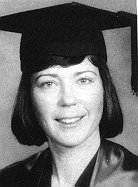Kimberly Anne Jenner

M. Sc. Thesis
Modern Deltaic Sedimentation in an Arctic Setting: Olivier Islands, MacKenzie Delta, Northwest Territories
(PDF - 21.4 Mb)
Depositional processes and cored sediments were studied at the site of the Olivier Islands, a series of modern subaerial delta lobes presently developing at the mouth of a major distributary channel within the Arctic Mackenzie Delta, Northwest Territories. Sediment transport and deposition are predominantly confined to a four month, ice-free, summer open-water season. During this period, heavy rainfall caused by storms in upstream distributaries, and coastal storm surges form the primary controls on water levels, discharge, sediment discharge and river mouth processes. Upstream flooding results in the introduction of anomalously high concentrations of suspended sediment to the distributary mouth during moderated water levels. Coastal surges result in bottom sediment resuspension, local coastal erosion, the introduction of brackish water into the distributary channel and upstream sediment transport during flow reversals.
Seven distinct sedimentary facies have been identified. The first is a stiff clay which unconformably underlies the Olivier Islands. Facies 2 comprises organic-rich trough cross-bedded and planar cross-bedded, internally laminated sand. Facies 3 consists of smaller successive sets of well-sorted, planar cross-bedded and climbing ripple-laminated sand. Facies 4 comprises fining- and coarsening-upward sets of sparsely rooted sand, silt and clay. Facies 5 comprises a thick, graded sand bed with basal flame structures and convolute bedding. Lastly, Facies 6 and Facies 7 consist of rooted, thin bedded and laminated sand and silt, and silt and clay, respectively. The vertical sequence of these facies depicts four major stages of land growth. The initial stage represents subaqueous bar development through the deposition of fluvial and marine reworked deposits of Facies 3, stratigraphically above Facies 1. This stage is succeeded by a lower energy emergent phase of bar growth recognized by the upward transition from Facies 3 to sparsely rooted deposits of facies. 4. Contiguous secondary channels are characterized by trough cross-bedded sand of facies 2. The third stage is dominated by upstream or reverse bar sedimentation and concurrent secondary channel infilling through the deposition of Facies 3 and Facies 4. The final stage of island growth is characterized by low energy flood deposits of Facies 6 and Facies 7 and reflects the subaerial, aggradational phase of the islands.
Depositional and morphological comparisons between the Olivier Islands and low-latitude subdeltas governed by coastal processes similar to those active within the Mackenzie Delta - low tidal range (30 cm), high fine suspended sediment supply, friction-dominated river mouth processes, a very shallow receiving basin and a transgressive setting - establish the differences between the two models. The morphological differences in the subaerial development of the Olivier Islands include: the confinement of land growth to the lobate shape of the present coastline and the predominance of upstream sedimentation. The Olivier Islands vertical sequence is differentiated by the absence of prodelta sediments, by the occurrence of channel-fill deposits beneath subaqueous bar sediments and by thin, poorly developed levees. The results of this study indicate that the shallow, transgressive framework (1.5 m) of the Olivier Islands, the effects of ice- related processes on sediment transport patterns, and storms are the three main factors contributing to these discrepancies.
Keywords:
Pages:
Supervisor: Phil Hill



